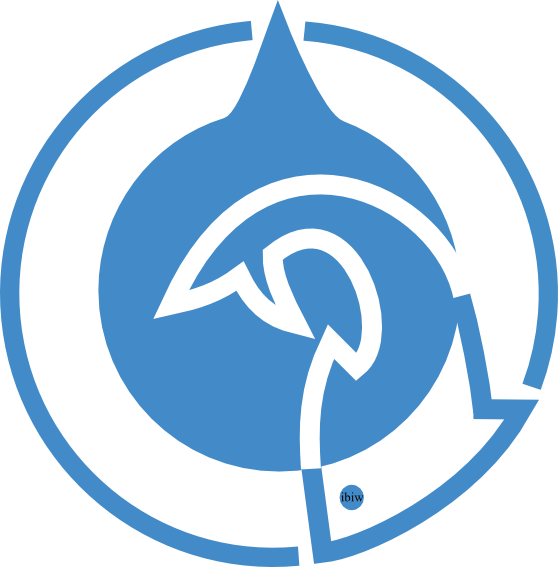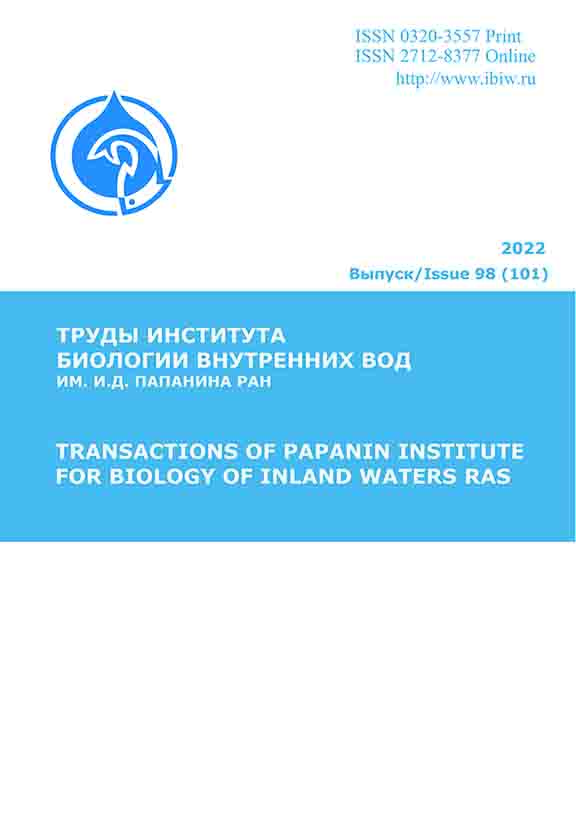UDC 574.583
The biotesting of the level of genotoxicity and clastogenicity of deep and surface waters of Lake Sevan (Armenia) in the summer period was carried out using two test systems: of the model test object Tradescantia (clone 02) and phytoplankton. The Tradescantia clone 02 stamen hair mutations (Trad-SHM) and Tradescantia micronucleus (Trad-MCN) bioassays are two of the efficient and reliable biomonotory test systems for mutagenicity of air, water and soil polutans. Here we report a significant increase in the level of The Tradescantia clone 02 stamen hair mutations (Trad-SHM) somatic mutations in all investigated probes compared to phone control level. The maximum manifestation of these genetic effects – PC was observed in Gilli water samples with five-fold increase. According to the micronucleus test (Trad-MN), when studying its two main test-criteria: the percentage of tetrads with micronuclei and micronuclei in tetrads, the maximum frequency of test indicators was detected in water samples of Tsapatakh and Arpa, where their level was 4 times higher than the background. A significant positive correlation between the somatic mutation events and consentration of chemical elements Ca, K, Na, Mg, Fe, Mo (p<0.05; p<0.001) was revealed. It also showed a significant correlation between MN in tetrads and consentration of chemical elements Na, Ca, Fe, Mo, Ni, Cd (p<0.05). The analysis of the spatial distribution of phytoplankton in the water area of the Lake Sevan, as well as data on the abundance, biomass and composition of the dominant species in the summer observation period showed an intensive development of Cyanoprokaryota (HAB) and green algae in the all water area of the lake, which caused the process of its eutrophication.
biotesting, Tradescantia (clone 02), genotoxicity, clastogenicity, water pollution, bioindication, phytoplankton, Harmful Algal Blooms of Cyanoprokaryota (HABs)
1. Abakumov V.A. Rukovodstvo po metodam gidrobiologicheskogo analiza poverhnostnyh vod i donnyh otlozheniy. Leningrad: Gidrometeoizdat, 1983. C. 78-86.
2. Aleksandrova V.V. Biotestirovanie kak sovremennyy metod ocenki toksichnosti prirodnyh i stochnyh vod. Nizhnevartovsk: Izd-vo Nizhnevart. gos. un-ta, 2013. 119 s.
3. Alekseevskiy N.I. Geneticheskiy analiz kachestva vody. Moskva: Izd-vo MGU. Geografiya, 1993. 135s.
4. Arutyunyan R.M., Avalyan R.E., Atoyanc A.L., Agadzhanyan E.A., Gabrielyan B.K. Biotestirovanie vodnyh prob oz. Sevan v period cveteniya vody i posle obrabotki ceolitom s primeneniem model'nogo test-ob'ekta // Doklady AN Armenii. 2021. T. 121. № 4. C. 294-301.
5. Gambaryan L.R., Shahazizyan I.V. Kratkiy opredelitel' rodov presnovodnyh vodorosley. Erevan: Izd-vo EGU. 2014. 61 s.
6. Zhukova A.A., Mastickiy S.E. Bioindikaciya kachestva prirodnoy sredy. Minsk: Izd-vo BGU, 2014. 112 s.
7. Matishov G.G., Selyutin V.V., Mesropyan K.E., Bulyshova N.I., Sheverdyaev I.V., Arutyunyan R.M., Gabrielyan B.K. Sovremennoe sostoyanie i problemy izucheniya ozera Sevan // Vestnik Yuzhnogo Nauchnogo Centra, 2016. T. 12. № 2. S. 43-52. DOI:https://doi.org/10.23885/2500-0640-2017-13-3-58-70
8. Ozero Sevan. Ekologicheskoe sostoyanie v period izmeneniya urovnya vody. Yaroslavl': Filigran', 2016. 328 s.
9. Ekologiya oz. Sevan v period povysheniya ego urovnya. Rezul'taty issledovaniy Rossiysko-Armyanskoy biologicheskoy ekspedicii po gidroekologicheskomu obsledovaniyu oz. Sevan (Armeniya). Mahachkala: Nauka, 2010. 348 s.
10. Aghajanyan E., Avalyan R., Atoyants A., Khosrovyan A., Aroutiounian R. Assessing a Freshwater Ecosystem Using Tradescantia Model Test Object // Water, Air, & Soil Pollution. 2020. № 231(2). P. 231-244. DOI:https://doi.org/10.1007/s11270-020-4407-3
11. Avalyan R.E., Aghajanyan E.A., Khosrovyan A., Atoyants A.L., Simonyan, A.E., Aroutiounian, R.M. Assessment of mutagenicity of water from Lake Sevan, Armenia with application of Tradescantia (clone 02) // Mutation Reseasrh. 2017. Vol. 800. P. 8-13. DOI:https://doi.org/10.1016/j.mrfmmm.2017.03.006
12. Campos C.F., Morelli S., De Campos Júnior E.O., Santos V.S.V., De Morais C.R., Cunha M.C., Souto H.N., Pavanin L.A., Bonetti AM, Pereira BB. Assessment of the genotoxic potential of water courses impacted by wastewater treatment effluents using micronucleus assay in plants from the species Tradescantia // J. Toxicol. Environ. Health A. 2019. № 82(13). P. 752-759.
13. Gevorgyan G., Rinke K., Schultze M. et al. First report about toxic cyanobacterial bloom occurrence in Lake Sevan, Armenia // Int Rev Hydrobiol. 2020. P. 1-12. DOI:https://doi.org/10.1002/iroh.202002060.
14. Grant W.F. The present status of higher plant bioassay for the detection of environmental mutagens // Mutation Reseasrh. 1994. Vol. 310. № 2. P. 175-185. DOI:https://doi.org/10.1016/0027-5107(94)90112-0
15. Hambaryan L., Khachikyan T., Ghukasyan E. Changes in the horizontal development of phytoplankton of the littoral of lake Sevan (Armenia) in conditions of water level fluctuations // Limnology and Freshwater Biology. 2020. № 4. P. 662-664. DOI:https://doi.org/10.31951/2658-3518-2020-A-4-662SI:
16. Hovsepyan A.A., Mamyan A.S., Khachikyan T.G., Tikhonova I.V., Sorokovikova E.G., Belykh O.I., Gevorgyan G.A. Monitoring of phytoplankton status in Lake Sevan (Armenia) in 2018 // Proceedings of the Yerevan State University. 2019. Vol. 53(3). P. 206-211.
17. Legrand C., Rengefors K., Fistarol G.O., Graneli E. Allelopathy in phytoplankton - biochemical, ecological and evolutionary aspects // Phycologia. Research Librarypg. 2003. Vol. 42. № 4. P. 406-419. DOI:https://doi.org/10.2216/i0031-8884-42-4-406.1
18. Linne von Berg K.-H., Hoef-Emden K., Melkonian M. Der Kosmos-Algenführer: Die wichtigsten Süßwasseralgen im Mikroskop. Stuttgart: Kosmos, 2012. 368 s.
19. Ma T.H., Cabrera G.L., Cebulska-Wasilevska A., Chen R., Loarca A.l., Vandenberg A.L., Salamone M.F. Tradescantia stamen hair mutation bioassay // Mutation Reseasrh. 1994. Vol. 310. № 2. P. 211-220. DOI: 0027-5107(94)00104-D
20. Ma T.H., Cabrera G.L., Chen R., Gill B.S., Sandhu S.S., Vandenberg A.L., Salamone M.F., Tradescantia micronucleus bioassay // Mutation Reseasrh. 1994. Vol. 310, № 2. P. 220-230. DOI:https://doi.org/10.1016/0027-5107(94)90115-5
21. Majer B.J., Grummi T., Uhl M., Knasmueller, S. Use of plant bioassay for the detection of genotoxins in the aquatic environment //Acta Hydrochimica et Hydrobiologica. 2005. Vol. 33. P. 45-55. DOI:https://doi.org/10.1002/aheh.200300557
22. Reynolds C., Huszar V., Kruk C., Naselli-Flores L., Melo S. Towards a functional classification of the freshwater phytoplankton // J. Plankton Res. 2002. Vol. 24. P. 417-428. DOI:https://doi.org/10.1093/plankt/24.5.417
23. Sakharova E.G., Krylov A.V., Sabitova R.Z., et al. Horizontal and vertical distribution of phytoplankton in the alpine Lake Sevan (Armenia) during the summer Cyanoprokaryota bloom // Problems of Ecology. 2020. Vol. 13 (1). P. 60-70. DOI:https://doi.org/10.1134/S1995425520010072
24. Salmaso N., Morabito G., Buzzi F., Garibaldi L., Simona M. & Mosello R. Phytoplankton as an indicator of the water quality of the deep lakes south of the Alps // Hydrobiologia. 2006. Vol. 563. P. 167-187. DOI:https://doi.org/10.1007/s10750-005-0003-1
25. Yang G. Tradescantia-micronucleus assay on the water quality of lake Hongzhe in Jiangsu Province, China // Mutation Reseasrh. 1999. Vol. 426. P. 155-157. DOI: S0027-5107(99)00047-0








